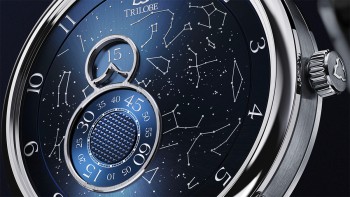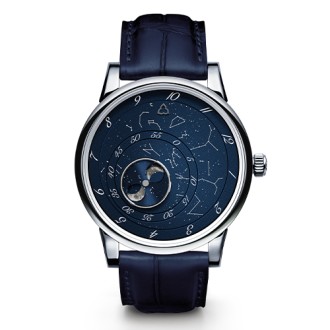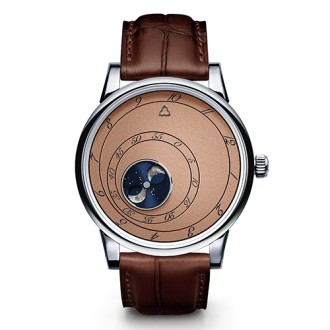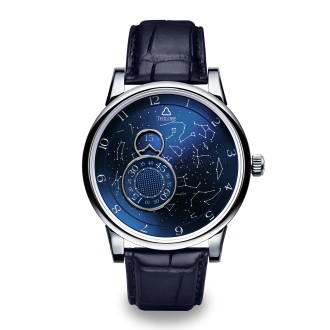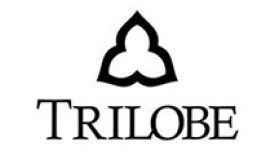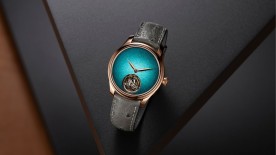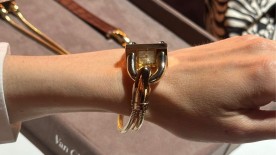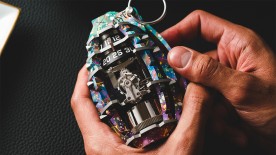Gautier Massonneau, who founded Trilobe in 2018, turns the pages of his many architectural and literary references. The ideal opportunity, thanks to this avid reader, the son of architects, to polish our cultural credentials – yes, there is more to life than footballers and influencers! We delve deeper into the unorthodox references behind Trilobe's distinctively designed watches.
Why this connection between Trilobe and the arts?
It's a fundamental connection. My inspiration comes entirely from the culture around me, whether that's architecture, literature, music, food… art in the broadest sense. The cultural environment in Paris, where I live, is extremely dense and inspiring. My parents taught me about architecture and I also read extensively. I connect easily with others, too.
Trilobe stands by this idiosyncrasy, not out of snobbery but to show the world what drives us: a more poetic relationship with time, and the desire to create art and beauty.
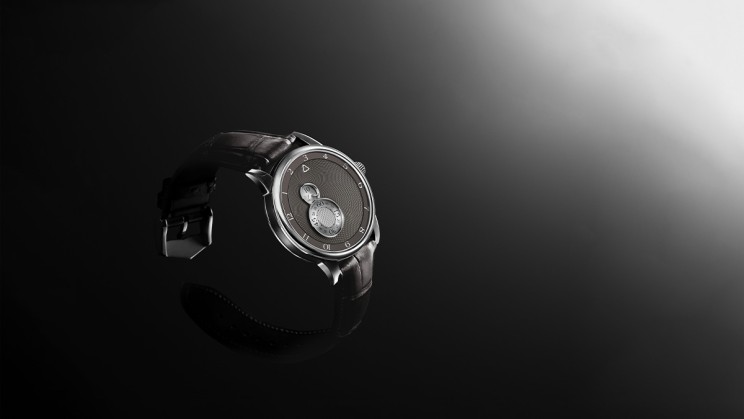
These artistic influences are already in the Trilobe name, which means trefoil in French.
It's a powerful symbol and an allusion to my parents. One of the earliest known examples of the trefoil in architecture is the Córdoba Mosque. Now it's a cross-cultural pillar. It would have been presumptuous of me to name the brand after myself, given that there are several of us behind it. The entire team can identify with this "umbrella" name.
The symmetry we see in the trefoil is a design principle for Trilobe's watches, too.
Absolutely. Its three elements represent hours, minutes and seconds. We always counterbalance this symmetry with elements of asymmetry, for example an off-centre dial.
How is your first movement, the X-Centric, inspired by Brutalist architecture?
Whereas a watch movement will often have a round construction with the geartrain forming an arc of a circle, this movement is built along vertical and horizontal straight lines. These linear perspectives create a powerful visual effect suggestive of Brutalist architecture, which employs identical principles.
While the mechanism, developed by Le Cercle des Horlogers, has to be irreproachable – and our originality did raise several additional challenges – this movement is first and foremost a scaffolding, supporting aesthetic and beauty.
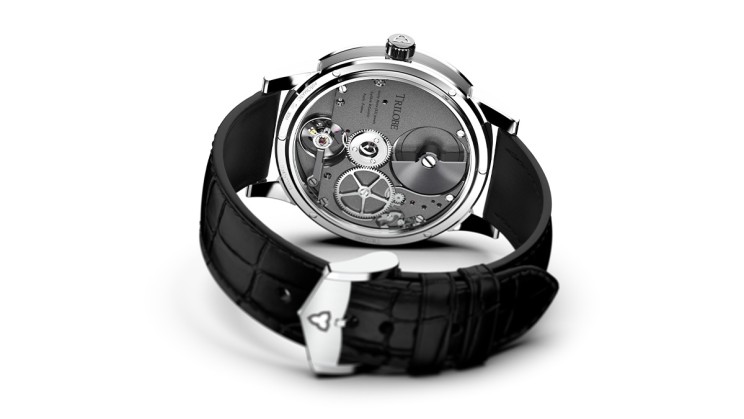
Isn't it ironic that something as refined as a high-end watch movement can suggest a perhaps debatable architectural movement?
It's the philosophy behind it that's interesting, the search for purity and a certain simplicity in its visual construction. These principles add a layer of complexity and that's what captivates me. There are some beautiful Brutalist buildings, even if some haven't aged particularly well.
Les Matinaux, Nuit Fantastique, Une Folle Journée… your watches are named after literary works. At what point does this connection between the watch and the text appear?
The concept for the watch always comes first. I love to think up new ways of approaching time and its mechanism. For me, it's the most fun aspect of the brand. I have so many things to say and this is a fabulous way of doing it. We have maybe ten or fifteen years of projects waiting in the wings.
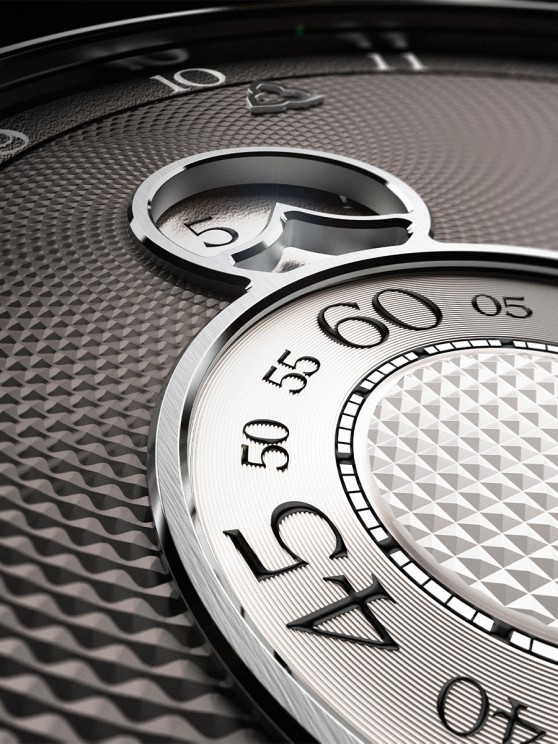
What made you choose Les Matinaux as the name for your first watch?
It reflects who we are and what we believe in: an invitation to see things differently, to be first to do things a different way. In Rougeur des Matinaux, René Char wrote "Impose your good fortune, take hold of your happiness and embrace risk. From seeing you, they will become accustomed." It's exactly our DNA.
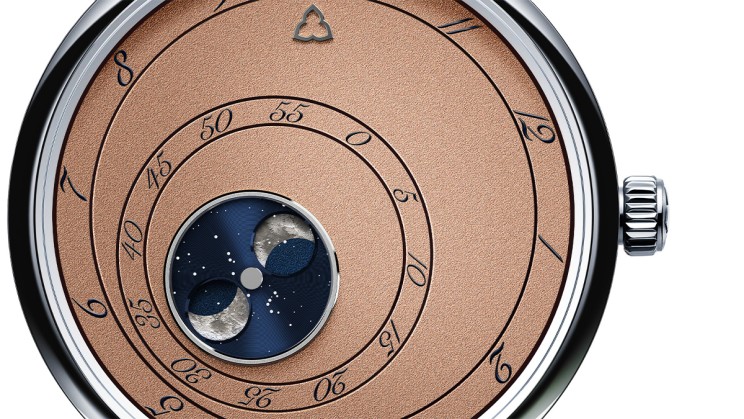
What about Nuit Fantastique? How does it relate to Stefan Zweig's short story, translated in English as Fantastic Night?
This is the story of a wealthy Viennese aristocrat living a life of utter boredom until he meets an extraordinary woman and is awakened to love and passion. Zweig encourages us to let excitement into our lives and to experience things in a different way.
This is expressed in the watch in quite a simple fashion. There are no hands. Minutes and seconds are read from the flange. As a vision of time, it breaks with convention.
I used to live in Japan and the time I spent there definitely helped to shape this desire for simplicity and sobriety. Being in contact with Japanese culture taught me that "taking away" is a means of "recreating beauty. As Saint-Exupéry wrote, "Perfection is achieved not when there is nothing more to add, but when there is nothing left to take away." To my mind, there is an entire philosophy contained in Nuit Fantastique.
Whereas your third watch, Une Folle Journée, is about exuberance.
Absolutely. Each of these watches has a completely different personality to the others. Une Folle Journée makes way for creativity, "exploding" into three dimensions, with all the difficulties this implied.
The name comes from Beaumarchais' play The Marriage of Figaro, whose full title is One Mad Day [Une Folle Journée] or The Marriage of Figaro. Beaumarchais was actually a watchmaker before becoming a playwright. His comedy urges us to defy convention and redefine principles. Which is what we do from a horological perspective.
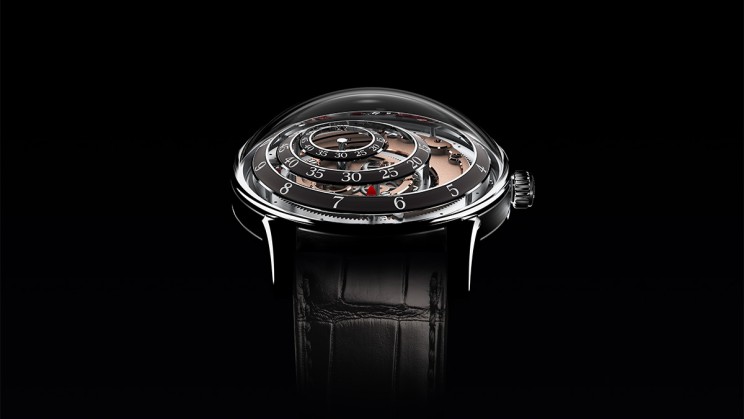
Is there a literary genre in particular that you would like to express in a watch?
Science fiction! A couple of years ago, I read Liu Cixin's The Three-Body Problem, before it became a Netflix series. It's completely out there! I use it to imagine different reference points and other worlds. In fact, some of our forthcoming projects are pretty eccentric, slightly mad, even.
